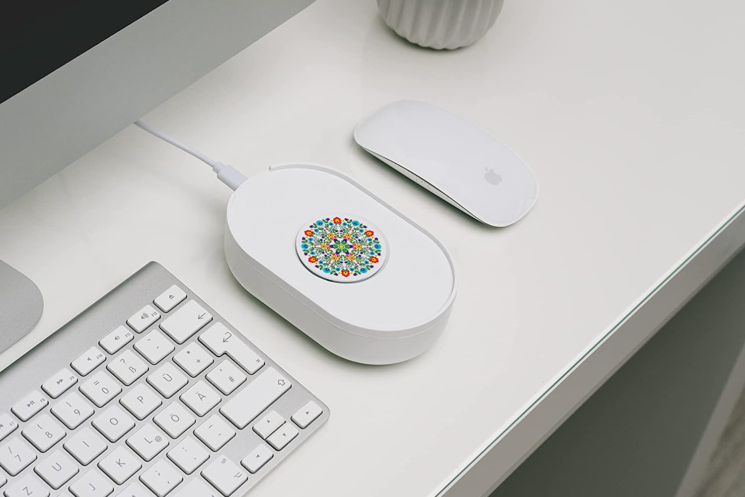Now that technology drives productivity and efficiency, the traditional office environment has evolved into a realm of screens, keyboards, and mice. While technological advancements have undoubtedly improved workplace productivity. They have also brought new challenges for employers, especially in monitoring employee behavior.
One such challenge is the potential use of mouse jigglers, a seemingly innocuous device that can have serious implications for employee productivity and security. Here we will explore what mouse jigglers are, why they might be used by employees, and most importantly, how employers can effectively detect their use to maintain a productive and secure work environment.
In This Post
Understanding Mouse Jigglers and Their Purpose
Mouse jigglers are physical devices or software applications designed to keep a computer awake by simulating mouse movements. These movements prevent the computer from entering sleep mode or locking itself due to inactivity. In essence, mouse jigglers trick the computer into thinking that the user is actively engaged, preventing any auto-logouts or idle status changes. Originally designed for legitimate purposes such as preventing screensavers during presentations or long software installations. Mouse jigglers have found their way into workplaces where employees seek to circumvent automated tracking systems or appear active while away from their workstations.
Why Use Mouse Jigglers?

While the use of mouse jigglers may raise concerns among employers, it is essential to understand the motivations behind their use. From the employee’s perspective, several reasons might drive them to employ these tools:
Flexibility and Autonomy
In modern workplaces with flexible hours and remote work arrangements, employees might need to step away from their desks for various reasons. Mouse jigglers can provide a workaround, allowing them to maintain the appearance of productivity even when they are temporarily absent.
Bypassing Monitoring Systems
In an era where employee behavior is often monitored, some employees might feel uneasy about constantly being under scrutiny. Mouse jigglers enable them to escape the gaze of time tracking and productivity tools, affording them a sense of privacy during breaks.
Fear of Micromanagement
Some employees may use mouse jigglers as a response to perceived micromanagement. By avoiding constant tracking, they feel less controlled, resulting in a boost in morale and job satisfaction.
The Risks and Impact on Workplace Productivity

While employees may have their own reasons for using mouse jigglers, their actions can have significant consequences for workplace productivity and security. Mouse jigglers can lead to a false sense of productivity, as employees appear active on their computers while not being engaged in work-related tasks. This behavior can ultimately harm the overall efficiency of the organization. Employees who use mouse jigglers to feign activity are effectively stealing time from the company. These lost hours can accumulate and hinder project deadlines and overall company performance.
Mouse jigglers pose significant security risks as they bypass automatic screen locks and login timeouts. This can expose sensitive data and systems to potential breaches if an unauthorized individual gains access to the unattended workstation.
How to Detect Mouse Jigglers
Now that we understand the implications of mouse jigglers in the workplace, let’s explore some effective methods employers can employ to detect their use:
- Analyzing Employee Computer Activity Logs: Most organizations have employee monitoring software that tracks computer usage. By examining activity logs, employers can identify suspicious patterns, such as continuous mouse movement without any corresponding work activity.
- Network Traffic Monitoring: Mouse jigglers may require internet access to function properly, leading to abnormal network traffic patterns. By monitoring network activity, IT teams can flag potential instances of mouse jiggler usage.
- Video Surveillance: While video surveillance should always be conducted with respect to privacy regulations, it can be a valuable tool for observing employee behavior at their workstations. If mouse jiggler usage is suspected, video footage can provide crucial evidence.
- Analyzing Output Discrepancies: Employers can cross-reference the amount of output or productivity generated by an employee with the time they appear to be active on their workstation. Significant discrepancies may indicate the use of mouse jigglers.
Addressing Employee Concerns

While it is essential for employers to monitor employee behavior to maintain productivity and security, it is equally crucial to address employee concerns about privacy and autonomy. Open communication and transparency can help bridge the gap between employer expectations and employee needs. Here are some strategies to address employee concerns:
Establish Clear Policies
Develop well-defined company policies regarding computer usage, remote work, and privacy. Communicate these policies effectively to all employees, ensuring they understand the rationale behind monitoring measures.
Emphasize Trust and Accountability
Encourage a culture of trust and accountability within the organization. Assure employees that monitoring is not meant to spy on them but to ensure fair and consistent performance evaluations.
Involve Employees in Decision-Making
Include employees in discussions about monitoring practices. Seek their input on how monitoring can be implemented in a way that respects their privacy while maintaining the company’s productivity goals.
Provide Flexibility
Offer flexibility in work hours and remote work options where applicable. Employees are more likely to respect monitoring measures if they feel they have some autonomy over their work schedules.
Implementing Employee Education and Training

To complement monitoring practices and address the root causes of mouse jiggler usage, organizations should invest in employee education and training. Educate employees about the potential security risks associated with mouse jigglers and the importance of protecting sensitive information. Awareness training can help them understand the real-world consequences of such actions.
Offer training programs on time management techniques, setting priorities, and maintaining productivity. Helping employees develop effective work habits can reduce the temptation to resort to mouse jigglers. High levels of stress and burnout can lead employees to seek ways to take longer breaks. Encourage stress management strategies, work-life balance, and regular breaks to promote employee well-being.
Conclusion
In today’s interconnected world, monitoring employee behavior has become a vital aspect of ensuring productivity and security within the workplace. The advent of mouse jigglers presents a challenge for employers seeking to maintain a transparent and productive work environment. By understanding what mouse jigglers are and the motivations behind their use, employers can implement effective strategies to detect their presence. Taking a proactive approach to addressing these issues can foster a culture of trust and transparency, leading to a more engaged and efficient workforce. As we move forward, vigilance in monitoring employee behavior while respecting individual privacy will be paramount for businesses to thrive in an increasingly digital landscape.